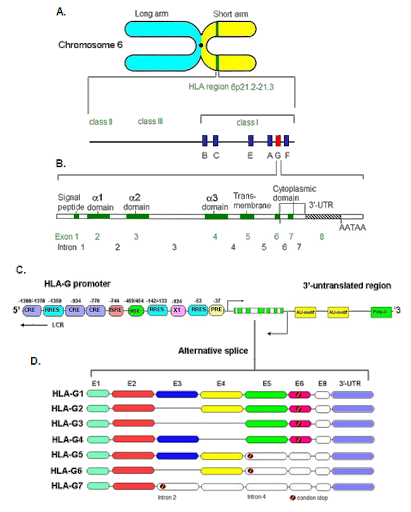

النبات

مواضيع عامة في علم النبات

الجذور - السيقان - الأوراق

النباتات الوعائية واللاوعائية

البذور (مغطاة البذور - عاريات البذور)

الطحالب

النباتات الطبية


الحيوان

مواضيع عامة في علم الحيوان

علم التشريح

التنوع الإحيائي

البايلوجيا الخلوية


الأحياء المجهرية

البكتيريا

الفطريات

الطفيليات

الفايروسات


علم الأمراض

الاورام

الامراض الوراثية

الامراض المناعية

الامراض المدارية

اضطرابات الدورة الدموية

مواضيع عامة في علم الامراض

الحشرات


التقانة الإحيائية

مواضيع عامة في التقانة الإحيائية


التقنية الحيوية المكروبية

التقنية الحيوية والميكروبات

الفعاليات الحيوية

وراثة الاحياء المجهرية

تصنيف الاحياء المجهرية

الاحياء المجهرية في الطبيعة

أيض الاجهاد

التقنية الحيوية والبيئة

التقنية الحيوية والطب

التقنية الحيوية والزراعة

التقنية الحيوية والصناعة

التقنية الحيوية والطاقة

البحار والطحالب الصغيرة

عزل البروتين

هندسة الجينات


التقنية الحياتية النانوية

مفاهيم التقنية الحيوية النانوية

التراكيب النانوية والمجاهر المستخدمة في رؤيتها

تصنيع وتخليق المواد النانوية

تطبيقات التقنية النانوية والحيوية النانوية

الرقائق والمتحسسات الحيوية

المصفوفات المجهرية وحاسوب الدنا

اللقاحات

البيئة والتلوث


علم الأجنة

اعضاء التكاثر وتشكل الاعراس

الاخصاب

التشطر

العصيبة وتشكل الجسيدات

تشكل اللواحق الجنينية

تكون المعيدة وظهور الطبقات الجنينية

مقدمة لعلم الاجنة


الأحياء الجزيئي

مواضيع عامة في الاحياء الجزيئي


علم وظائف الأعضاء


الغدد

مواضيع عامة في الغدد

الغدد الصم و هرموناتها

الجسم تحت السريري

الغدة النخامية

الغدة الكظرية

الغدة التناسلية

الغدة الدرقية والجار الدرقية

الغدة البنكرياسية

الغدة الصنوبرية

مواضيع عامة في علم وظائف الاعضاء

الخلية الحيوانية

الجهاز العصبي

أعضاء الحس

الجهاز العضلي

السوائل الجسمية

الجهاز الدوري والليمف

الجهاز التنفسي

الجهاز الهضمي

الجهاز البولي


المضادات الميكروبية

مواضيع عامة في المضادات الميكروبية

مضادات البكتيريا

مضادات الفطريات

مضادات الطفيليات

مضادات الفايروسات

علم الخلية

الوراثة

الأحياء العامة

المناعة

التحليلات المرضية

الكيمياء الحيوية

مواضيع متنوعة أخرى

الانزيمات
Homeoboxes genes
المؤلف:
Genetics Home Reference
المصدر:
Help Me Understand Genetics
الجزء والصفحة:
16-10-2020
3930
Homeoboxes genes
Homeobox genes are a large group of similar genes that direct the formation of many body structures during early embryonic development. In humans, the homeobox gene group contains an estimated 235 functional genes and 65 pseudogenes (structurally similar genes that do not provide instructions for making proteins). Homeobox genes are present on every human chromosome, and they often appear in clusters. Many classes and subgroups of homeobox genes have been described, although these groupings are used inconsistently.
Homeobox genes contain a particular DNA sequence that provides instructions for making a string of 60 protein building blocks (amino acids) known as the homeodomain. Most homeodomain-containing proteins act as transcription factors, which means they bind to and control the activity of other genes. The homeodomain is the part of the protein that attaches (binds) to specific regulatory regions of the target genes.
Genes in the homeobox group are involved in a wide range of critical activities during development. These activities include directing the formation of limbs and organs along the anterior-posterior axis (the imaginary line that runs from head to tail in animals) and regulating the process by which cells mature to carry out specific functions (differentiation). Some homeobox genes act as tumor suppressors, which means they help prevent cells from growing and dividing too rapidly or in an uncontrolled way.
Because homeobox genes have so many important functions, mutations in these genes are responsible for a variety of developmental disorders. For example, mutations in the HOX group of homeobox genes typically cause limb malformations. Changes in PAX homeobox genes often result in eye disorders, and changes in MSX homeobox genes cause abnormal head, face, and tooth development. Additionally, increased or decreased activity of certain homeobox genes has been associated with several forms of cancer later in life.
Examples of genes in this gene group: ADNP, ALX1, ALX3, ALX4, ARX, CRX, HESX1, HOXA13, HOXB13, LHX1, LMX1B, MEOX1, MSX1, MSX2, NKX2-1, OTX2, PAX3, PAX6, PHOX2A, PHOX2B, PITX1, PITX2, POU3F4, PROP1, SHOX, SIX1, SIX3, SIX5, TGIF1, ZEB2
The HUGO Gene Nomenclature Committee (HGNC) provides an index of gene groups (https://www.genenames.org/data/genegroup/#!/group/516) and their member genes.

References
Boncinelli E. Homeobox genes and disease. Curr Opin Genet Dev. 1997 Jun;7(3):331-7. Review. PubMed: 9229108 (https://www.ncbi.nlm.nih.gov/ pubmed/9229108).
Cillo C, Cantile M, Faiella A, Boncinelli E. Homeobox genes in normal and malignant cells. J Cell Physiol. 2001 Aug;188(2):161-9. Review. PubMed: 11424082 (https://www.ncbi.nlm.nih.gov/pubmed/11424082).
Holland PW, Booth HA, Bruford EA. Classification and nomenclature of all human homeobox genes. BMC Biol. 2007 Oct 26;5:47. PubMed: 17963489 (https://www.ncbi.nlm.nih.gov/pubmed/17963489). Free full-text available from PubMed Central: PMC2211742 (https://www.ncbi.nlm.nih.gov/pmc/articles/ PMC2211742/).
Zhao Y, Westphal H. Homeobox genes and human genetic disorders. Curr Mol Med. 2002 Feb;2(1):13-23. Review. PubMed: 11898846 (https:// www.ncbi.nlm.nih.gov/pubmed/11898846).
 الاكثر قراءة في مواضيع عامة في الاحياء الجزيئي
الاكثر قراءة في مواضيع عامة في الاحياء الجزيئي
 اخر الاخبار
اخر الاخبار
اخبار العتبة العباسية المقدسة

الآخبار الصحية















 قسم الشؤون الفكرية يصدر كتاباً يوثق تاريخ السدانة في العتبة العباسية المقدسة
قسم الشؤون الفكرية يصدر كتاباً يوثق تاريخ السدانة في العتبة العباسية المقدسة "المهمة".. إصدار قصصي يوثّق القصص الفائزة في مسابقة فتوى الدفاع المقدسة للقصة القصيرة
"المهمة".. إصدار قصصي يوثّق القصص الفائزة في مسابقة فتوى الدفاع المقدسة للقصة القصيرة (نوافذ).. إصدار أدبي يوثق القصص الفائزة في مسابقة الإمام العسكري (عليه السلام)
(نوافذ).. إصدار أدبي يوثق القصص الفائزة في مسابقة الإمام العسكري (عليه السلام)


















